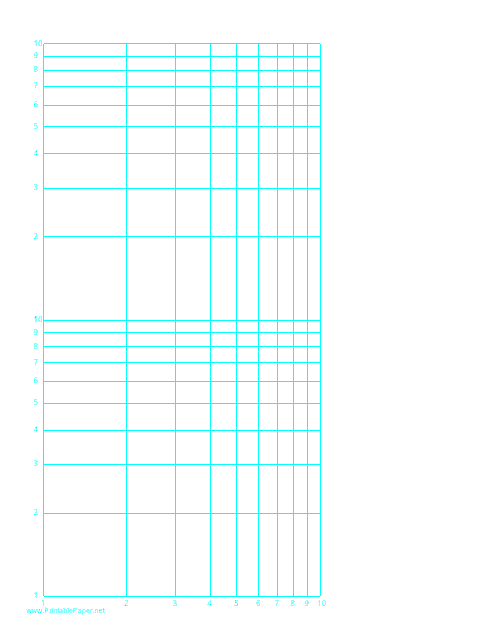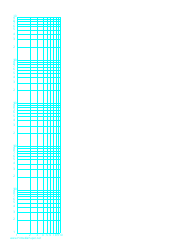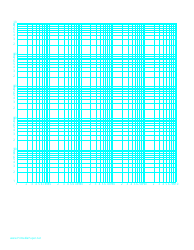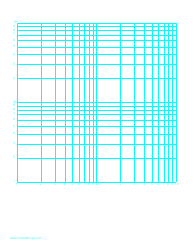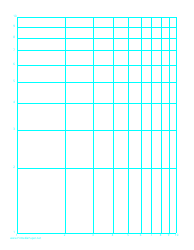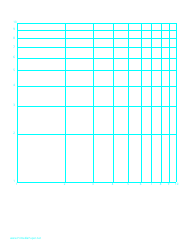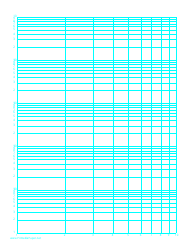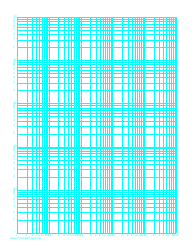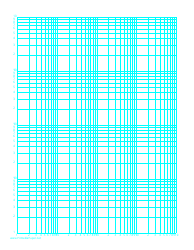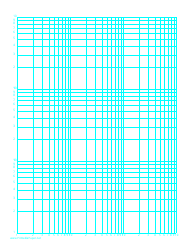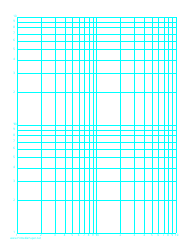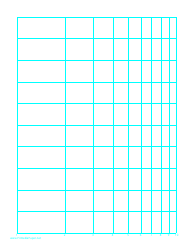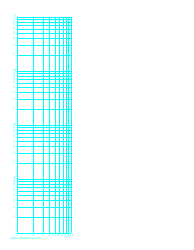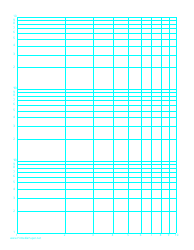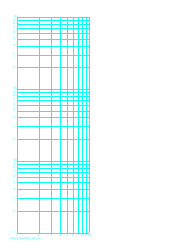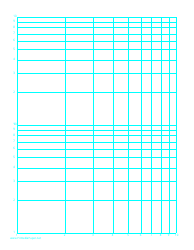Log-Log Paper With Logarithmic Horizontal Axis (One Decade) and Logarithmic Vertical Axis (Two Decades) With Equal Scales on Letter-Sized Paper Template
Log-Log Paper With Logarithmic Horizontal Axis (One Decade) and Logarithmic Vertical Axis (Two Decades) With Equal Scales on Letter-sized Paper Template is typically used for graphical representation of mathematical, scientific, or engineering data. By using logarithmic scales on both axes, this type of graphing paper allows for viewing and analyzing data that spans several orders of magnitude in a more manageable and precise way. This paper is particularly useful in fields such as physics, engineering, and economics, where data can vary greatly. It can help plot functions, demonstrate exponential growth or decay, and present complex data in a more straightforward way. The template's letter size format makes it easily printable on standard paper.
The Log-Log Paper with Logarithmic Horizontal Axis (One Decade) and Logarithmic Vertical Axis (Two Decades) on a letter-sized paper template is typically used by engineers, mathematicians, and scientists. It helps them in visualizing data that cover a large range of quantities. The users might be students or professionals who are conducting research or experimenting with data that follow exponential or power-law growth or decay. However, there is no specific person or organization that universally "files" this type of document as the use varies depending on individual, academic, or research needs.
FAQ
Q: What is a log-log paper?
A: Log-log paper, or logarithmic graph paper, is a specialized type of graph paper that can show a wide range of data values. It's used to graph data that change exponentially, which includes scientific, economic, and mathematical data. Both axes on this type of paper are logarithmic, allowing for a wide variety of scales.
Q: What does a logarithmic horizontal axis (one decade) mean?
A: A logarithmic horizontal axis (one decade) refers to the horizontal axis of the log-log paper where each unit increase represents a tenfold, or one decade, increase. For example, if the horizontal axis was labeled 1, 2, 3, these would actually represent 10^1, 10^2, 10^3 (or 10, 100, and 1000) respectively.
Q: What does a logarithmic vertical axis (two decades) with equal scales mean on a log-log paper?
A: A logarithmic vertical axis (two decades) with equal scales on a log-log paper means that each unit increase on the vertical axis represents a 100 times, or two decade, increase. Further, 'with equal scales' suggests that the horizontal and vertical scales are of the same proportion. So if 1 cm on the horizontal axis corresponds to a tenfold increase, then the same will apply to the vertical axis.
Q: What is a letter-sized paper?
A: A letter-sized paper is the standard size of paper used in the United States, Canada, and some other countries. The dimensions of letter-sized paper are 8.5 x 11 inches.
Q: When is log-log paper with logarithmic horizontal axis (one decade) and logarithmic vertical axis (two decades) with equal scales on letter-sized paper used?
A: Log-log paper with one decade logarithmic horizontal axis and two decades logarithmic vertical axis with equal scales on letter-sized paper is often used in fields like engineering and physics to visually represent data sets that cover multiple orders of magnitude, such as earthquake strengths or light intensity. It's also convenient because the letter-size fits well in standard printers and folders for easy storage and accessibility.
